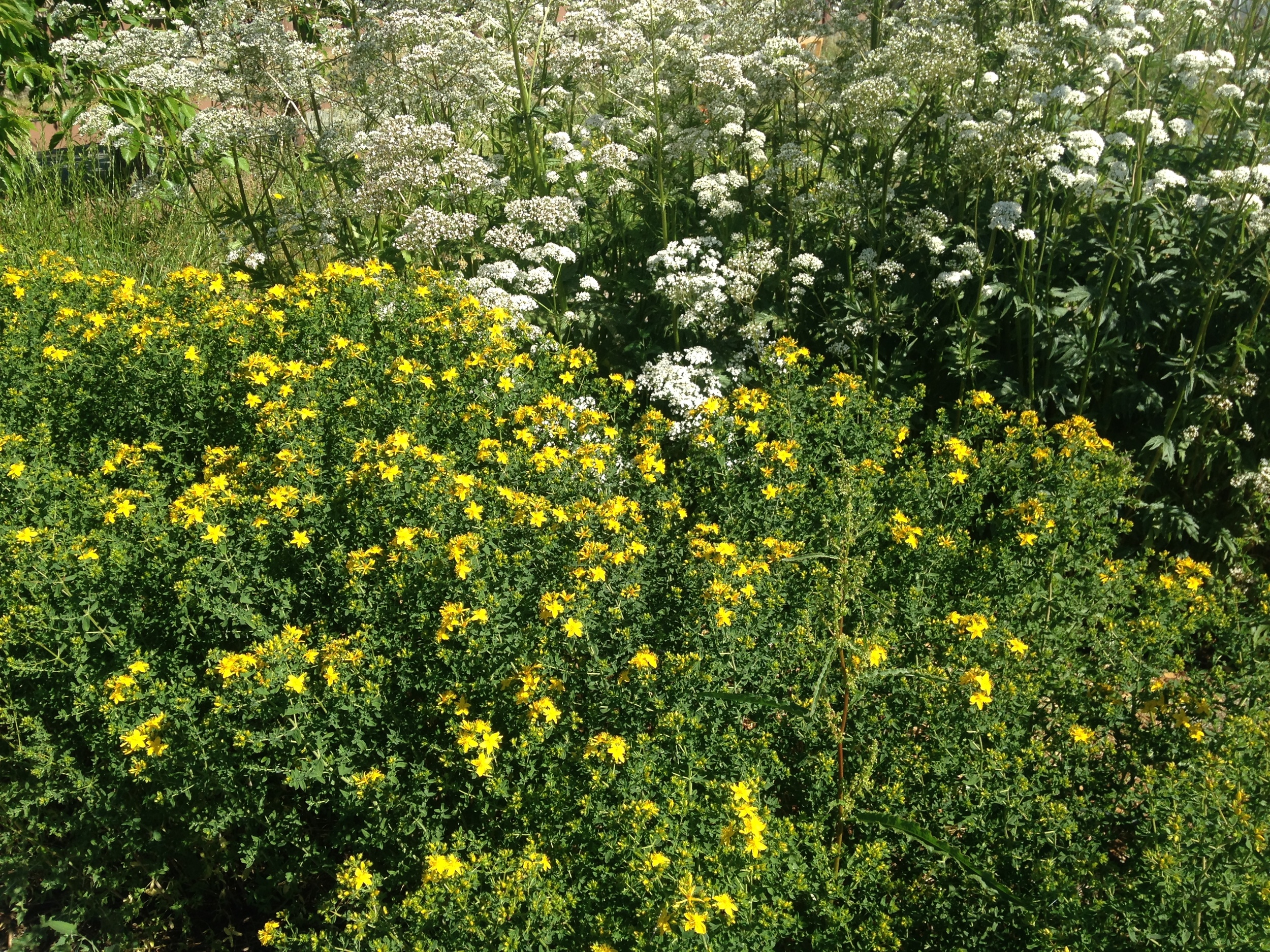Common Names
St John's Wort, Perforate St John’s-wort, Common St John’s Wort
Botanical Name
Hypericum perforatum
Plant Family
Hypericaceae
Native Range
Europe
Life Cycle
Perennial
Hardiness Zone
4-9
Habit
To 3ft tall in bloom with clusters of small star-like golden flowers. St. John's Wort can be identified by the tiny pin-prick holes in its leaves which can be seen when held up against the sky. The leaves have tiny perforations, hence the species name 'perforatum'. It slowly spreads by slender underground rhizomes to form new baby plants.
Sun/Soil
Full sun, well-drained soil.
Germination/Sowing
Seeds germinate easily and can be direct sown in fall or spring, or started in flats in the spring and then transplanted out.
Growing/Care
Very drought tolerant. Remove flower stalks after blooming. Plants can be cut back to the ground and will re-grow.
Harvesting
Bloom time is normally mid-July for St John’s Wort, but with unseasonably ho weather spring weather some years i has bloomed mid-June.
The flower tops are harvested when the majority of the buds are open. There will always be some finished flowers, some freshly opened flowers, and some close buds together on the tops.
Just collect up the whole lot by clipping the tops of the plants in flower, usually this is the top 4-6 inches. The leave that come with the harvest of the top contain some of the medicinal proper ties too, so it is fine to include them a well.
St John’s Wort is best tinctured fresh, but can be dried for tea.
Culinary Uses
None known.
Medicinal Uses
The bright yellow flowers, when tinctured fresh, turn the menstruum a deep vibrant red the colour of blood. The medicine seems to contain a vitality, a 'life blood', that brings us strength and uplifts us. Infused with the lightness and warmth of the summer sun St. John's Wort can help pull us out of the melancholy grey spaces we may inhabit from time to time. Like a little gift of warmth and sunshine in the dull, damp, cold winter of the soul.
In addition to being a wonderful antidepressant, St. John's wort is invaluable for repairing damaged nerve tissue, and is a good remedy for sciatica and neuralgia. It's action as a nervine, combined with its power as a antiviral, make it a specific for treating the shingles virus both topically and internally. Incredibly anti-inflammatory, as well as astringent and antimicrobial, St. John's wort is also a choice wound healing herb, especially great as a burn remedy.
Themes
Apothecary Garden, Woodland Garden, Low Maintenance, Deer Resistant, Attracts Pollinators, Container Garden.










